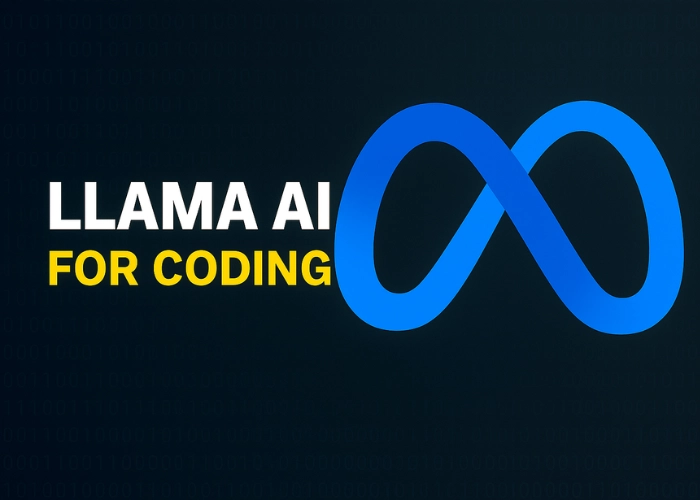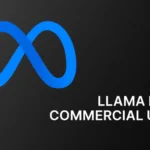When Meta launched the Llama 4 model family, the developer community was buzzing with anticipation. Positioned as a direct, open-weight competitor to giants like GPT-4o, it promised top-tier performance for a fraction of the cost. The initial benchmarks from Meta painted a picture of a new king in the world of AI coding assistants.

But then, developers actually started using it.
The story that has emerged since the April 2025 release is one of profound contradiction. On one hand, you have Meta’s impressive-looking benchmarks. On the other, you have a tidal wave of community feedback expressing disappointment, frustration, and a sense that Llama 4 is a significant step backward for coding.
So, what’s the real story? Is Llama 4 good for coding, or is it a bust? This deep-dive analysis cuts through the hype to give you an evidence-based answer. We’ll examine the benchmarks, review real-world performance, and analyze the security risks to help you decide if Llama 4 deserves a place in your development workflow.
The Promise vs. Reality: A Tale of Two Narratives
The confusion around Llama 4’s coding ability begins with the massive gap between official marketing and independent evaluation.
Meta’s Official Claims and Benchmark Controversy
Meta’s launch campaign was strong, claiming Llama 4 Maverick could beat models like GPT-4o on coding and reasoning. A key piece of evidence was a high ELO score on the LMSYS Chatbot Arena, a popular human-preference leaderboard.
However, this narrative quickly unraveled. It was revealed that the model submitted to the leaderboard was a custom, “experimental” version specifically tuned for conversational ability, not the standard Maverick model available to the public. When the public model was evaluated, it ranked a distant 32nd. This controversy created a significant credibility problem, suggesting a “teach to the test” strategy that undermined the trustworthiness of vendor-provided results.
The Behemoth Delay and Inherited Flaws
Adding to the skepticism is the significant delay of Llama 4’s flagship “teacher” model, Behemoth. This nearly 2-trillion-parameter model, from which the public Scout and Maverick models were distilled, was pushed back to fall 2025 or later due to internal concerns that its performance didn’t meet Meta’s bold claims.
This context is critical. If the teacher model is flawed or unfinished, it’s highly likely that the student models (Scout and Maverick) have inherited those shortcomings. This helps explain the “reports of mixed quality” that even Meta’s own engineers have acknowledged.
Llama 4 Coding Performance: The Benchmark Deep Dive
While benchmarks aren’t everything, they provide a crucial quantitative baseline. The numbers show Llama 4 is a capable reasoning engine but a distinctly mediocre coder.
Code Generation Benchmarks (LiveCodeBench, HumanEval)
On tests that measure raw code generation and problem-solving, Llama 4’s performance is respectable for an open-weight model but falls far short of its top-tier proprietary rivals.
- On LiveCodeBench, Llama 4 Maverick scores 43.4. This is better than GPT-4o (32.3) but trails its open-weight competitor DeepSeek v3.1 (45.8) and is crushed by models like Gemini 2.5 Pro (70.4).
- On HumanEval, Maverick achieves a pass@1 score of around 62%. This is significantly lower than GPT-4o’s ~90% and Gemini 2.5 Pro’s near-perfect ~99%.
The Reasoning vs. Coding Paradox
The most telling data comes from comparing coding benchmarks to pure reasoning benchmarks.
While Llama 4 is average on coding tests, it excels on complex reasoning tasks. On the GPQA Diamond benchmark (graduate-level reasoning), Maverick scores an impressive 69.8, significantly outperforming GPT-4o (53.6).
This stark contrast is the key to understanding Llama 4. Its architecture, a Mixture-of-Experts (MoE) design, makes it an efficient generalist. It’s fantastic at knowledge synthesis and logical deduction but seems to lack the focused, deep computational power required for the specific, algorithmic rigor of complex coding. As one developer review aptly put it, using Maverick’s 128 experts feels like “hiring 128 interns instead of 10 seasoned engineers.”
Comparative Coding & Reasoning Benchmark Scores
Here’s how Llama 4 Maverick stacks up against its main competitors as of June 2025:
| Benchmark | Llama 4 Maverick | GPT-4o | Gemini 2.5 Pro | DeepSeek v3.1 |
|---|---|---|---|---|
| LiveCodeBench | 43.4 | 32.3 | 70.4 | 45.8 |
| HumanEval | ~62% | ~90% | ~99% | ~37% |
| GPQA Diamond | 69.8 | 53.6 | 84.0 | 68.4 |
Scores reflect a compilation of available data. Higher is better.
Real-World Coding with Llama 4: A Qualitative Review
Beyond the numbers, how does Llama 4 actually feel to use for day-to-day coding? The feedback from the developer community has been overwhelmingly critical.
“An Open-Source Disappointment”
On forums like Reddit’s r/LocalLLaMA, the sentiment is clear: many developers see Llama 4 as a step backward. Users consistently report bugs, context-forgetfulness, and a failure to perform on par with smaller, more specialized open-source models. One user’s blunt assessment captures the general feeling: “Genuinely astonished how bad it is.”
Failure on Practical Tests
Llama 4’s weaknesses are exposed in practical, multi-step coding challenges.
- The “20 Bouncing Balls” Test: In this informal test to create a simple physics simulation, Llama 4 Maverick’s performance was called “abysmal,” producing code with fundamentally incorrect logic, while competitors like DeepSeek v3 created a perfect simulation.
- LeetCode Problems: When tasked with a hard-level LeetCode problem, Maverick’s solution passed only 10 out of 632 test cases, cementing its reputation as a “disaster for coding” complex algorithms.
- Bug Fixing: In a test to fix real-world bugs, Maverick’s accuracy was only 70%, even slightly worse than the older Llama 3.3 model.
Identified Strengths and Weaknesses
It’s not all bad news. Llama 4 does have some redeeming qualities, alongside its major flaws.
Strengths:
- Good Code Structure: It often produces more robust, reusable code by wrapping logic in functions.
- Proactive Error Handling: It frequently includes input validation and try-catch blocks without being prompted.
- Detailed Explanations: Its debugging explanations are often more detailed and educational than other models.
Weaknesses:
- Complex Logic Failures: It consistently fails at tasks requiring sophisticated, multi-step algorithmic logic.
- Verbose and Mechanical: Its output can be overly verbose and lacks the creative spark needed for some tasks.
- Inconsistent: Performance is highly variable, and it struggles with maintaining state in long conversations.
Can You Trust Llama 4’s Code? The Security Analysis
For any professional developer, the security of AI-generated code is a non-negotiable concern. Here, the findings are deeply troubling.
Independent red teaming reports from firms like Promptfoo and Virtue AI have exposed significant security vulnerabilities.
- On over 1,600 adversarial probes, Llama 4 Maverick had a low average pass rate of just 25.5%.
- Crucially, on tests measuring its ability to resist generating malicious code, its pass rate was only 24.44%.
The Virtue AI report concluded that both Scout and Maverick exhibit “high risks in code generation” and are “prone to generating exploitable code.”
Meta’s strategy is to provide external safety tools like LlamaFirewall and Code Shield. However, this creates a “build-your-own-safety” paradigm. The base models are released with documented security flaws, and the burden is placed entirely on the developer to correctly implement and configure separate safety guardrails. This makes deploying Llama 4 for code generation a significant security risk for any organization that isn’t prepared to invest heavily in security engineering.
The Verdict: Should You Use Llama 4 for Coding?
After analyzing the benchmarks, real-world tests, and security reports, the conclusion is clear.
Llama 4 is not a top-tier AI coding assistant. Its performance in generating, debugging, and solving complex coding problems is demonstrably inferior to leading proprietary models like GPT-4o (via GitHub Copilot) and Gemini 2.5 Pro, and even some open-weight competitors like DeepSeek.
However, this doesn’t mean it’s useless. Llama 4’s strengths lie in its powerful general reasoning capabilities.
Strategic Recommendations for Developers:
- For Code Generation & Debugging: Do not use Llama 4 as your primary tool. Its high error rate and security risks make it an unreliable partner for production code. Stick with proven leaders like GitHub Copilot.
- For Codebase Analysis & Summarization: This is Llama 4’s sweet spot. The massive context window of Llama 4 Scout, despite its practical limitations, is excellent for “read-only” tasks. Use it to ingest an entire codebase to get architectural overviews, summarize legacy systems, or understand complex dependencies.
- For General Reasoning AROUND Code: Llama 4 is a strong, cost-effective option. Use it to brainstorm architectural ideas, translate complex requirements into technical plans, or get detailed explanations of intricate algorithms. Its reasoning power is its greatest asset.
In essence, think of Llama 4 not as a pair programmer, but as a brilliant, if sometimes flawed, systems analyst.
FREQUENTLY ASKED QUESTIONS (FAQ)
QUESTION: So, is Llama 4 better for coding than GPT-4o or GitHub Copilot?
ANSWER: No. For the core tasks of code generation, completion, and debugging, GPT-4o (which powers the latest versions of GitHub Copilot) is significantly more accurate, reliable, and secure according to both benchmarks and real-world tests.
QUESTION: Why is Llama 4 so bad at coding if its reasoning benchmarks are good?
ANSWER: This is likely due to its Mixture-of-Experts (MoE) architecture. It makes the model a highly efficient generalist with broad knowledge, which is great for reasoning tasks. However, it seems to lack the concentrated, deep computational focus required for the specific, stateful, and algorithmic logic of complex programming.
QUESTION: Can I run Llama 4 Maverick for coding on my gaming PC?
ANSWER: No. The hardware requirements for Llama 4 are immense. Even the smaller Scout model requires an enterprise-grade NVIDIA H100 GPU. The larger Maverick model needs a multi-GPU server. Attempting to run it on consumer hardware like an RTX 4090 will result in out-of-memory errors. For practical use, you will need to access it via a cloud API.
QUESTION: What is the single best use case for Llama 4 in a developer’s workflow?
ANSWER: The best and safest use case is large-scale codebase analysis and summarization using Llama 4 Scout. Its ability to process hundreds of thousands of tokens allows you to ask high-level questions about an entire repository, understand legacy code, or generate documentation in a way that is difficult or impossible with smaller-context models.






